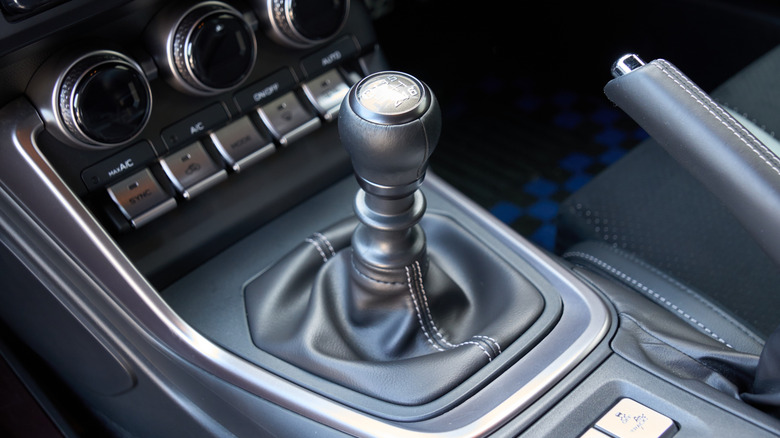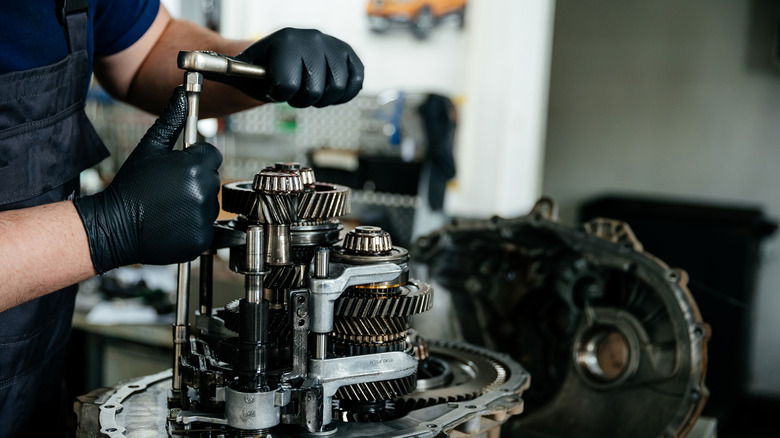Who Invented The Manual Transmission & Which Was The First Car To Use It?
For the longest time, people who wanted to learn how to drive had to do it using a stick shift or a manual transmission. Before the turn of the century, most cars came with this type of transmission. Things only changed upon the invention of the automatic transmission and its subsequent mass production and takeover of the automotive market. By the 1990s, many carmakers still equipped their vehicles with manual transmission, but only for the lower trims or sporty models. Regardless of the decline in its market share, it's undeniable how huge an impact the manual transmission has had on the transportation industry of the entire world. So, who do we have to thank for its invention, and which car was the first to run on it?
The manual transmission was invented by French inventors Louis-Rene Panhard and Emile Levassor in the 1890s. Prior to this, the first cars ran on a single-speed transmission that relied on a belt to transmit drive power to the axle. The pair came up with a three-speed chain-driven design for a car transmission. In 1891, they unveiled the Panhard et Levassor, now considered the first-ever car to use a manual transmission. However, while the two were credited for the invention of the manual transmission, it was Louis Renault, the founder of the Renault brand, who was responsible for changing the chain to a driveshaft and adding a differential axle, forming what would become the basis for the drivetrain layout of modern-day manual cars.
Manual transmission technology is becoming obsolete
While the longstanding debate on whether manual or automatic transmissions are better may boil down to user preference, their availability on the market isn't influenced by the same factor. In fact, while automatic transmissions have become more popular over the years, a number of people may still prefer manual transmissions for better control and a more engaging driving experience. Despite this, automatic cars already outnumber manual vehicles by a huge margin, with fewer than 1% of new cars sold in the U.S. in 2025 expected to be stick-shifts. Exactly 30 years before that, the percentage of vehicles sold with manual transmission was over 25%.
The manual transmission's road to obsolescence is inevitable at this point. The U.K. government is banning the sale of new internal combustion engine (ICE) cars starting in 2030, with the goal of achieving zero emissions from all new cars and vans by 2035. The U.S., as a whole, has not yet decided to phase out sales of new gasoline and diesel cars nationwide, but it is targeting a similar timeframe. However, California is already determined to ban new gasoline cars, trucks, and SUVs by 2035, along with New York, Washington, Oregon, Massachusetts, and Vermont. Meanwhile, other countries, including Germany, Norway, Canada, Denmark, Japan, and even China, have also agreed to stop the sale of fossil fuel-powered cars between 2035 and 2040. While the bans will not affect already bought cars, these will be a big step closer to the global aim of becoming carbon-neutral by 2050.

